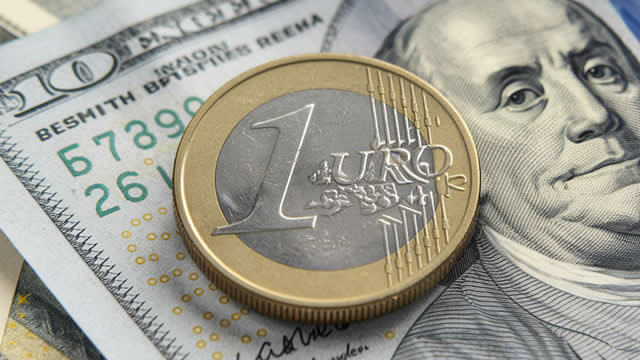Recent Currency Market Trends: A Slight Weakness for the US Dollar
The foreign exchange market has seen some noticeable shifts in the past few days, with the US dollar (USD) weakening against most major currencies. This trend, however, should not be overinterpreted, as the overall outlook for the greenback remains modestly bullish.
US Dollar’s Performance Against Major Currencies
The US dollar experienced a slight decline against the euro (EUR), the Swiss franc (CHF), the British pound (GBP), and the Australian and New Zealand dollars (AUD and NZD), respectively. The EUR/USD exchange rate, for instance, rebounded from around the 1.0300 handle, reaching levels close to 1.0400.
The Euro’s Resilience
The euro’s recent resilience can be attributed to several factors. First, the European Central Bank (ECB) has taken a more hawkish stance on interest rates, suggesting a possible rate hike later this year. Second, the economic data out of Europe has been stronger than anticipated, particularly in Germany and France. Lastly, geopolitical tensions, such as the ongoing conflict in Ukraine, have not escalated as feared, reducing safe-haven demand for the Swiss franc and Japanese yen.
Impact on Individuals
For individuals traveling to Europe or engaging in international business transactions, a weaker US dollar means that their purchasing power will be reduced when exchanging their dollars for euros. Conversely, for those dealing in commodities priced in dollars, such as oil or precious metals, a weaker dollar can lead to increased profits as the commodities become cheaper for buyers using other currencies.
- Travelers: A weaker US dollar means that your purchasing power will be reduced when traveling to Europe.
- Business Transactions: A weaker US dollar may negatively impact businesses engaging in international transactions.
- Commodity Producers: A weaker US dollar can lead to increased profits for commodity producers.
Global Implications
The weakening US dollar also has implications for the global economy. A weaker dollar makes US exports more expensive for foreign buyers, potentially reducing demand and negatively impacting US companies. However, a weaker dollar can also make US goods more competitive in international markets, potentially boosting exports. Additionally, a weaker US dollar can lead to increased demand for US Treasuries, as they become relatively more attractive to foreign investors.
Conclusion
In conclusion, the recent weakness of the US dollar against most major currencies should not be mistaken for a long-term trend. The overall outlook for the greenback remains modestly bullish. For individuals and businesses, a weaker US dollar may impact purchasing power, international transactions, and commodity profits. On the global scale, a weaker US dollar can have implications for US exports, US Treasuries, and geopolitical tensions.
It is important to keep in mind that currency markets are influenced by a multitude of factors, including economic data, central bank policies, and geopolitical developments. Stay informed and stay flexible when engaging in international transactions or investments.





